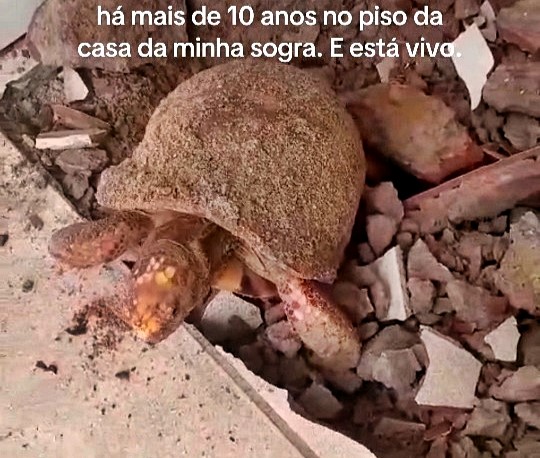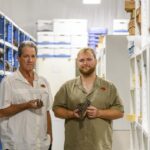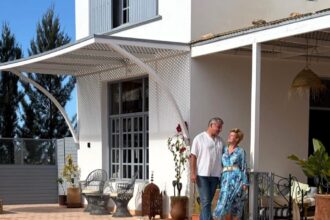A couple were stunned to discover a live tortoise under flooring they laid nearly a decade earlier.
Footage shows how the reptile was unearthed when the floor tiles were smashed with a hammer.
The couple made the mind-boggling find on 7 February after bringing in a builder to look at a damp issue.
READ MORE: Singing sensation dog looking for new home after two years in shelter
- Advertisement -
In the outbuilding at the back of their house, the builder noticed there was a cavity beneath one of the floor tiles.
He called Luiza Coelha da Cruz Aguiar and her husband over as he began smashing the tile with a hammer.
The three were stunned when the tortoise emerged.
Aguiar, 60, told local media: “The builder noticed the tile was loose and started breaking it up, thinking he’d find the water leak.
“That’s when he came across the tortoise and called us over. We were completely shocked.”
- Advertisement -
The outbuilding at the back of the couple’s house in Itacajá, Brazil, is nearly a decade old.
Aguiar said: “We think this tortoise must have come in with the truckload of gravel we had delivered over nine years ago for the back of the house.
“It must have been tiny at the time.
- Advertisement -
“When we took it out, we noticed its shell had some deformities, probably caused by being pressed up against the ceramic tiles for so long.”
Aguiar believes the tortoise could not have entered any other way.
She said: “The foundation here is about a metre high from the ground to the tiles and it’s completely sealed, with no gaps.”
The tortoise found under Aguiar’s floor is believed to be a yellow-footed tortoise (Chelonoidis denticulata).
The species eats both animals and plants and has a much slower metabolism compared to mammals of a similar size.
Biologist Aluísio Vasconcelos de Carvalho told local media: “There were places where oxygen, and more importantly, water and moisture, could get in, which helped it survive for so long.”
He believes the only food it ate was insects that burrow through the soil.
Carvalho said: “The digestion process is slow, so they can go long periods without eating.
“The little food they do consume provides everything they need to survive.”
Carvalho believes aestivation may have also contributed to its survival, as reported by What’s The Jam.
He said: “Aestivation is basically a reptile’s ability to go into a dormant state during the hottest times of the year.
“Some species do this to conserve energy.”
The tortoise is still at the couple’s home, albeit now in a spare bathroom, where Aguiar has been feeding it fruit.
After spending so long beneath the floor, it has become highly sensitive to light and cannot be exposed to sunlight for long.
The Tocantins Nature Institute has asked Aguiar to get in touch so they can organise for it to be collected.
READ MORE: Dogs tie the knot in plush wedding ceremony


















